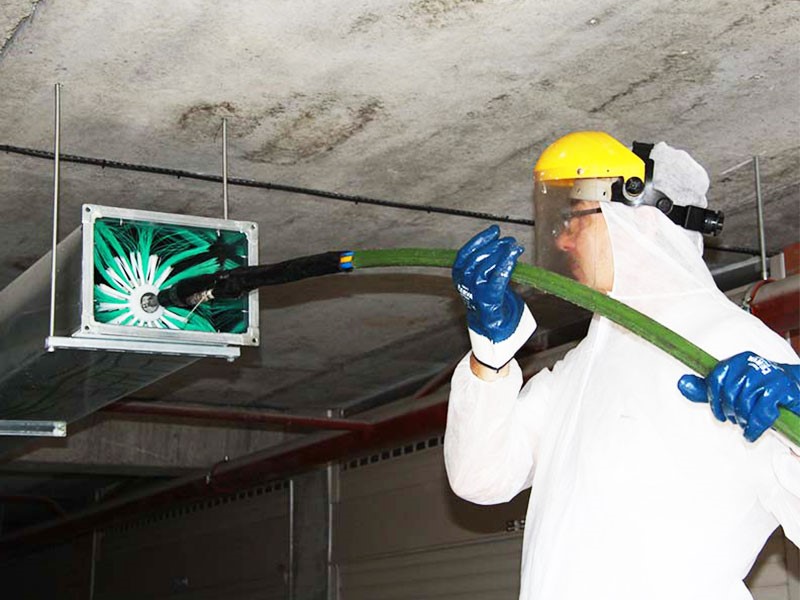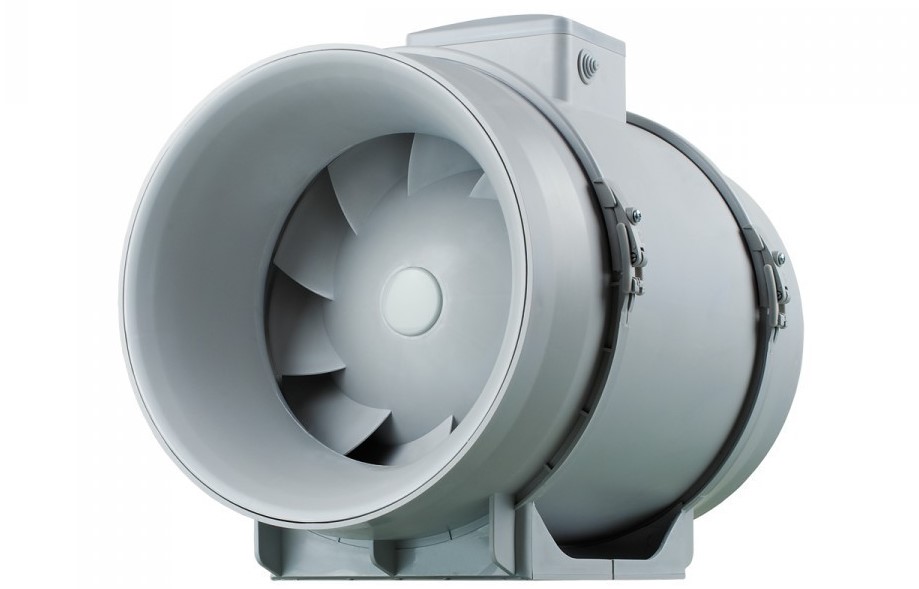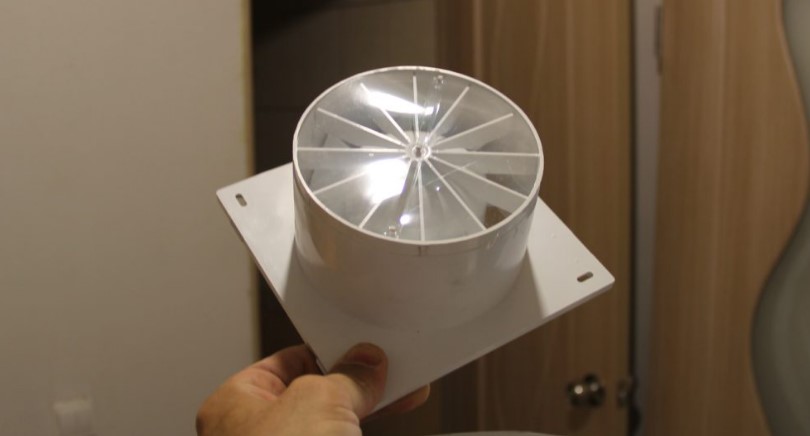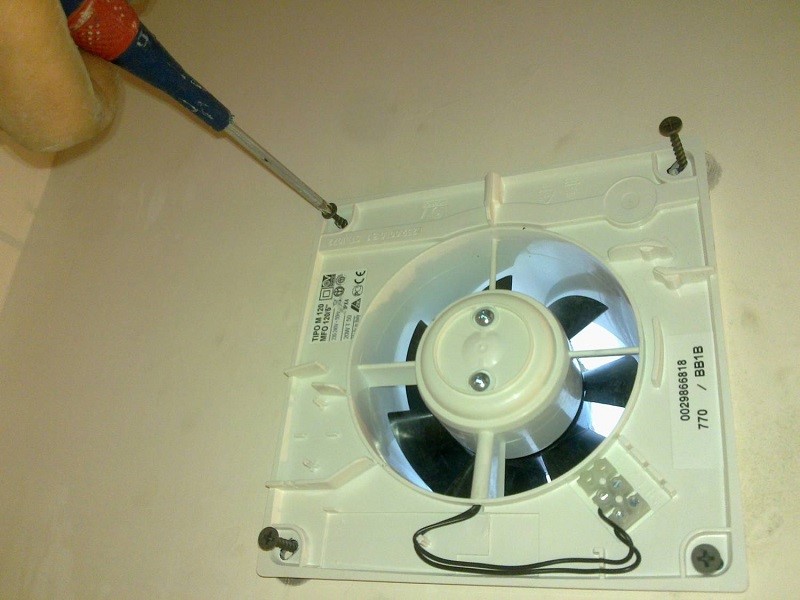Bathroom ventilation, toilet or kitchen is designed to create optimal conditions for air exchange. A properly installed and periodically switched on (manually or automatically) fan allows you to maintain an acceptable level of humidity, although it creates a certain noise. Sometimes a humming ventilation system leads to a feeling of discomfort and requires the adoption of measures to solve the problem. There are a lot of reasons why the fan is noisy - and most of them can be eliminated on your own.
Noise and buzz are signs of a problem.
It is recommended to pay attention to noise even before purchasing the device. The value of the indicator is usually indicated in the instruction manual of the device. If the noise level is higher than the permissible values, it is worth giving preference to less noisy models, even if you have to overpay for improved operational characteristics.

The noise level of the device in the list of characteristics on the site
The noise level should be checked after installing the fan. If the value of the noise load turned out to be noticeably greater than that indicated in the passport data, the problem may lie in the incorrect installation. You can avoid the problem by entrusting the installation of the fan to an experienced master. Another cause of noise can be factory defects - such a device should be returned under warranty.
The problem is considered serious in those cases when the fan is buzzing, the noise from which was previously almost invisible. They solve it by removing the device and checking its condition. If the moving parts are very worn, the fan should be replaced.

Impeller condition check
Compare the level of noise generated by ventilation with current regulations. So, in the daytime in residential premises, the volume should not be higher than 40 dB, at night - 30 dB. Although, unlike the noise of other equipment (for example, a computer processor cooler), the fan in the bathroom, kitchen or toilet does not work continuously, which means that the maximum level can reach 70–80 dB - but not higher.
Noise reasons
To reduce the noise level from forced ventilation, you should choose models of popular brands that are characterized by quiet operation and long-term operation. These include the brands Silent, Viessmann, Vortice and Maico. But even this equipment may not work as quietly as expected.
The main reasons for the increase in noise during operation of the fans are as follows:
- increase the level of vibration of the impeller;
- engine malfunction;
- bearing friction;
- too high speed of air passage through the impeller blades;
- violation of verticality or poor fixation of the device;
- poor assembly (one of the main problems when using cheap models);
- lack of preventative maintenance of the device.

Maintenance work
An appeal to a qualified specialist who is able to take into account all the nuances of installation will help to avoid installation problems and do everything right. So, for example, only models with ball bearings can be installed on the ceiling, and too long a fan nozzle leads to increased air resistance and loud noise.
The reasons for the increased volume of the fan may be sound waves propagating through the duct. Working in normal mode, the device starts to buzz strongly - first of all, this applies to channel models.The problem is no longer only in the fan, but in the whole system, therefore comprehensive measures should be taken, including soundproofing of the ventilation ducts.
Soundproofing methods for duct fan
The reasons for choosing duct fans include the need for forced ventilation over a relatively large area. Their characteristic feature is installation not in one of the walls of the room, but inside the ventilation duct. Such devices are served by several rooms at once, and sometimes the whole apartment or house. Duct fan performance higher, which leads to an increase in noise level.

Duct fan
One of the ways to solve the problem of the noisy operation of the ventilation system is high-quality sound insulation of the ducts. This requires:
- Prepare the necessary tools (silicone glue, soft rubber, roller with a long handle).
- Cut rubber strips suitable for the length.
- Glue the inside of the channels with them, firmly pressing them to the walls.
The rubberized surface will increase sound absorption and eliminate most of the noise from the duct fan. However, this method is not suitable for apartment buildings, the residents of which will have to solve the problem by soundproofing the walls closest to the duct and reducing the cross section. Changing the size of the channel accelerates the movement of air, which leads to spontaneous damping of the sound wave in the laminar air flow. The wall is insulated with a thin layer of mineral wool or other porous materials.
Noise reduction of wall models in a toilet or in a bathroom
A loudly working fan in a domestic room does not cause such a feeling of discomfort as duct devices installed in the center of a house or apartment. However, it is still worth solving the problem if the noise from the ventilation system increased noticeably during operation. In order to correct the situation, use the following methods:
- transferring the fan to work with fewer revolutions, which automatically reduces noise from the passage of air through its blades;
- checking the correct installation of the device;
- installation or replacement of silencers;
- check the compliance of the device with operating conditions (and, if necessary, replace it).

Fan replacement
A good option for creating optimal air exchange in the rooms and maintaining a comfortable noise level can be called special silent models. The volume of their work does not exceed 25–26 dB. This not only does not interfere with the users of the ventilation system, but also complies with sanitary standards.
The principle of noise reduction in such devices is the use of special vibration isolators that reduce the vibration of rotating fan elements. The bearings of the device do not require maintenance and provide silent continuous operation for 20-30 thousand hours. When the forced ventilation system is constantly on, the operational life of the equipment reaches 3-4 years, with periodic use more than 10 years.

Silent Installation
Choosing a suitable device and special sound insulation methods will reduce the volume of the forced ventilation system. And, although it is not possible to completely get rid of noise, its level will correspond to the norms. To increase the efficiency of work to eliminate the noise load from a working fan, it is recommended to entrust them to specialists.



